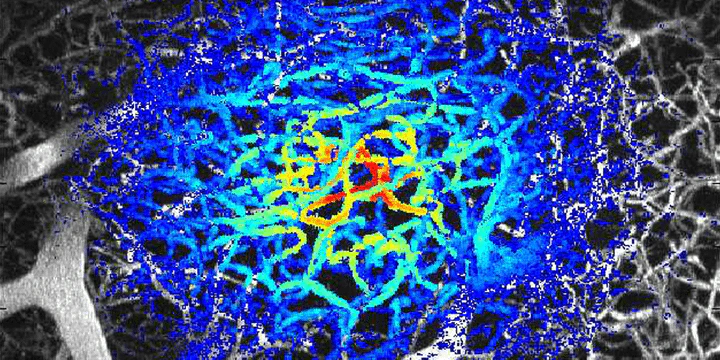Modeling Light Propagation
 Origin of fluorescence signal (Davis, 2011)
Origin of fluorescence signal (Davis, 2011)We study light scattering using numerical methods such as Monte Carlo or finite-difference time-domain (FDTD) simulations. These methods leverage recent advances in computational power to directly model dynamic light scattering in arbitrary three-dimensional voxelized geometries. These approaches do not require assumptions about the degree of multiple scattering or the form of the autocorrelation function and are capable of rapidly evaluating the effects of changes in particle motion. We obtain vectorized vascular geometries using multiphoton microscopy and assign location-appropriate optical properties. These dynamic light scattering Monte Carlo (DLS-MC) simulations have been used to understand the depth dependence of measured fluorescence signals and to quantify the effects of multiple scattering events on laser speckle contrast imaging (LSCI).
).](/project/modeling-light-propagation/autocorrelation_hue95822469a5bf6ebc0c0bfdd2f7afd6f_302762_b4ed67b5655a97a9d633d74b2d16dfa4.webp)
We are also leveraging the versatility of DLS-MC to develop blood flow tomography for LSCI. This high spatial resolution computational optical imaging technique is based on the principles of LSCI and allows for reconstructing blood flow maps from speckle contrast images provided that the three-dimensional vascular structure is known or can be assumed.
).](/project/modeling-light-propagation/bloodflow_hu248f9c1a15030077519262e7a505ee94_287902_7dfaffaca8fe54fa2ce580baaceafcae.webp)